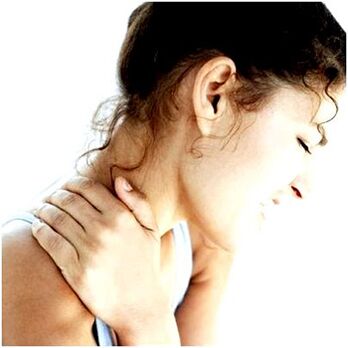
The osteochondrous process simultaneously affects the spine or more.Lumbar and cervical vertebrae are mainly affected by pathologies because they are most prone to loads due to the anatomy of the human skeleton.
The consequences of the spine osteochondrosis in the cervical region cause the most discomfort and potential complications, since the neck is an area in which it is not rich in nerve highways, many of which are directly nourished by the brain.
Therefore, clinical symptoms with osteochondrosis of the cervix are related to the ischemia of the brain.In addition, nerve roots, which provide sensitivity and motor activity in the hands and shoulder belts, when squeezed with destroyed vertebrates can give a variety of symptoms.
Below are the general clinic of osteocondrosis of the cervical spine.
Dizziness
Dizziness is also due to breaking the bloodstream of the organs of the inner ear, which ensures the balance of the body.Nystagm is often connected to dizziness - arbitrary fluctuations on the side of the observers.
Air shortage
This feeling appears due to irritation of the end of the membrane nerve.This is one of the components of the cervix's nerve beam and is involved in the regulation, depth and frequency of breathing.Patients complain that they cannot breathe in full chest.
In some cases, the symptom exacerbates severe shortness of breath and suffocation.For the same reason, breathing stops at night and snores.
The disadvantage of oxygen breathing problems is ultimately the cause of increased fatigue, concentration and memory problems.
Nausea
Accompany the air.In some areas of the brain and inner ear, it is also due to blood circulation problems.Nausea is sometimes observed with unobtrusive vomiting provoking the movement of the head and body.Frequent nausea and vomiting are the result of appetite, weight loss, and nutritional failure.
The problems of vision
"Flies" in the eyes, a decrease in visual acuity, the fog before the eye - these are all symptoms of the brain area due to ischemia, which is responsible for vision.
Patients with osteochondrosis complain less often because the lack of blood supply from the spine compensates the bloodstream of the carbon arteries system.
Eye muscles glasses and therapeutic gymnastics do not solve the problem, usually vision improves after the treatment of osteochondrosis.
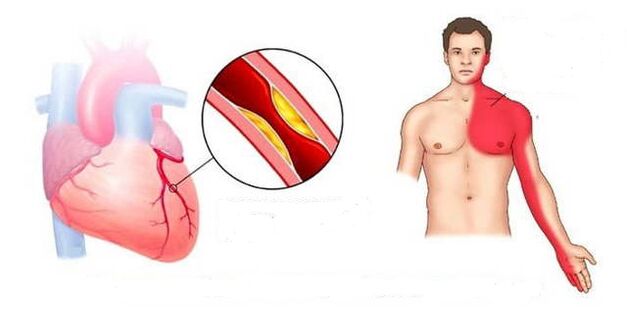
The degree of unstable pressure in the elongated brain is due to the blood flow, which is responsible for the function of the vascular motor center.
It occurs with cramps of the brain arteries because short -term blood flow is short -term stopping along the spine arteries.
From the state of losing the patient's consciousness, it can be quickly removed so that the legs are slightly higher than the head - the flow of blood to the brain allows a person to lead to life.
After an attack after the fainting, speech and reversible problems can be observed for a while due to a brief shutdown of blood flow.
Greenish symptoms
Often this can be the only sign that indicates the cervix osteochondrosis.They are expressed as sweat, drought and a lot of feelings in the throat, difficulties in swallowing.The symptoms are accompanied by compression of the nerve plexus responsible for the innervation of the pharynx.Such manifestations should be distinguished from a similar clinic due to inflammation or tumor.
The increase in the body temperature of the cervical -oseochondrosis is not the most common symptom, rarely and locally observed: in the cervical and collar areas, with slight redness of the skin.
First of all, the clinic of osteocondrosis of the cervical spine may be of different severity, depending on the stage of the pathology, and is lighter during the aggravation period, and for the second time to develop in certain syndromes.
Section I
The beginning of degenerative processes in the cartilage of the spinal boards.The symptoms are weak, sometimes not observed at all.The first signs of osteochondrosis of the cervical spine:
- Cervical discomfort, arms, shoulders, sometimes become pain;
- headache;
- easy restriction of neck motor activity;
- rapid transfer of visual impairment;
- Reducing the sensitivity of the collar area.
Important: These symptoms become more pronounced as the head decision.
As a general rule, in the first phase of osteochondrosis of the cervix region, patients do not go to a doctor, thinking that all symptoms are associated with fatigue, stress, age, and lack of sleep.
II.Platoon
At this stage, vertebrates' protrusion began, the intervertebral cracks are narrow, and the collagen fiber of the fibrous ring of the plate is destroyed.Due to the compression of the nerve cells, there are noticeable, painful symptoms that increase during the cervical movement and increase during the turns of the head.Here you can suspect the cervix osteochondrosis, which is as follows in the second stage:
- pronounced pain in the neck, sometimes crunching;
- The skin of the shoulders and hands almost completely loses sensitivity;
- Headaches are frequent and do not pass for a long time;
- visual impairment in the eyes of "flies";
- ringing and noise in the ear;
- weakness of the upper limbs;
- The clarity of tendon reflexes decreases;
- pain relief with a dedication under the blade;
- Feeling of sore throat, problems with swallowing;
- Sleep disorders, usually insomnia.
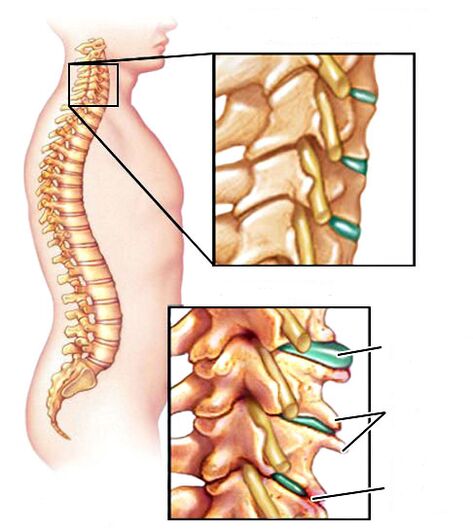
Long head holding in a situation leads to severe pain.At this stage of the disease, patients are seeking medical attention.
III.
The fibrous ring on the plate is destroyed and a hernia is formed.In the third stage, the spine, displacement and vertebrae displacement and dislocation are due to their poor fixation.Symptoms are as follows:
- intense, acute pain in the neck, collar zone, heart area;
- The sensitivity of the scalp on the back of the head, in the shoulder region, in the hands, until the complete absence;
- damaged the cervix's spine;
- paresis and paralysis of the upper limbs;
- Tendular reflexes were practically not observed.
This is a serious stage of the disease in which the patient is no longer able to support his head.Compression of spinal cord and spinal arteries leads to paralysis and parachis in other parts of the body and in the spinal cord.
Non -specific and various symptoms accompany the cervical spine osteochondrosis, and many different symptoms make it difficult to diagnose and further treatment, as some may be a sign of completely different diseases.Symptoms of cervical osteochondrosis are formed in groups called syndromes.Their presence and severity can indicate the pathology of the cervical spine with updated localization.
Clinical image of osteochondrosis of the cervical spine - symptoms, symptoms
The cervical region osteochondrosis is a chronic, slow progressive spinal disease in which the vertebrae, joints between vertebrae and discs are influenced and destroyed.The vertebrae between the first and seventh, which belongs to the cervix region, suffers.
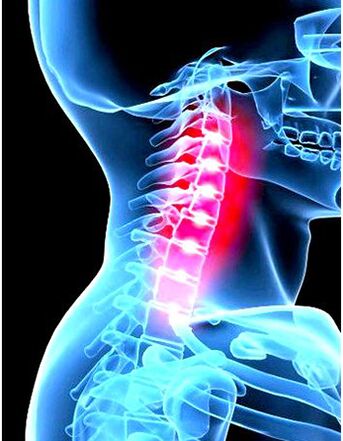
As the disease progresses, intervertebral discs lose their elasticity and strength, relax, relax, and depreciate their depreciation.Such deformation is due to energy disorders and tissue exhaustion changes.
These infringements are a natural process of body aging, but various overloads, posture disorders, injuries, spinal congenital disorders and some other causes cause early wear of cartilage and discs.
The pain has different localization and may be in the neck, in the occlital region, in the shoulder or in the upper limb.The pain in the shoulder or hand appears when the nerve spine is naughty in the upper limb.The pain of the head of the head is cramped in the cervical muscles, which are related to the occlital bones and circulatory disorders in this zone.
When symptoms occur:
- A decrease in hand sensitivity occurs when a spine is damaged, which contains sensitive nerves that innervate the upper limb.
- Restriction of the cervical spine and crunching movements During movements, the height of the intervertebral disc, the appearance of bone growth on the body of the vertebrae, and the damage between the cervical vertebrae.
- Dizziness, impaired coordination, weakness occur in severe cases, with severe deterioration of the blood supply to the blood supply to the brain, cerebellum, cerebellum and trunk.
- Numbness of tongue, a decrease in hearing and vision
All these symptoms are involved in the spinal artery in the process, which is located in the transverse processes of the cervical vertebrae.As a result of the formation of osteochondrosis of the cervix, the formation of fibrous tissue and the formation of vertebrae vertebrae, the blood flow of the arteries deteriorates, leading to the blood supply to the blood supply to the octicles of the brain and cerebellum.
Reasons
- Excessive physical activity in sport or in heavy physical work;
- hereditary predisposition;
- Neck hypothermia (walks without a scarf in winter);
- voltage;
- Work on your computer;
- obesity.
Some of the above reasons cause osteochondrosis and other spine.
The degree of osteochondrosis is determined by the patient's clinical image and complaints.The concept of degree should not be confused with the sections of osteochondrosis.The sections are discussed below.
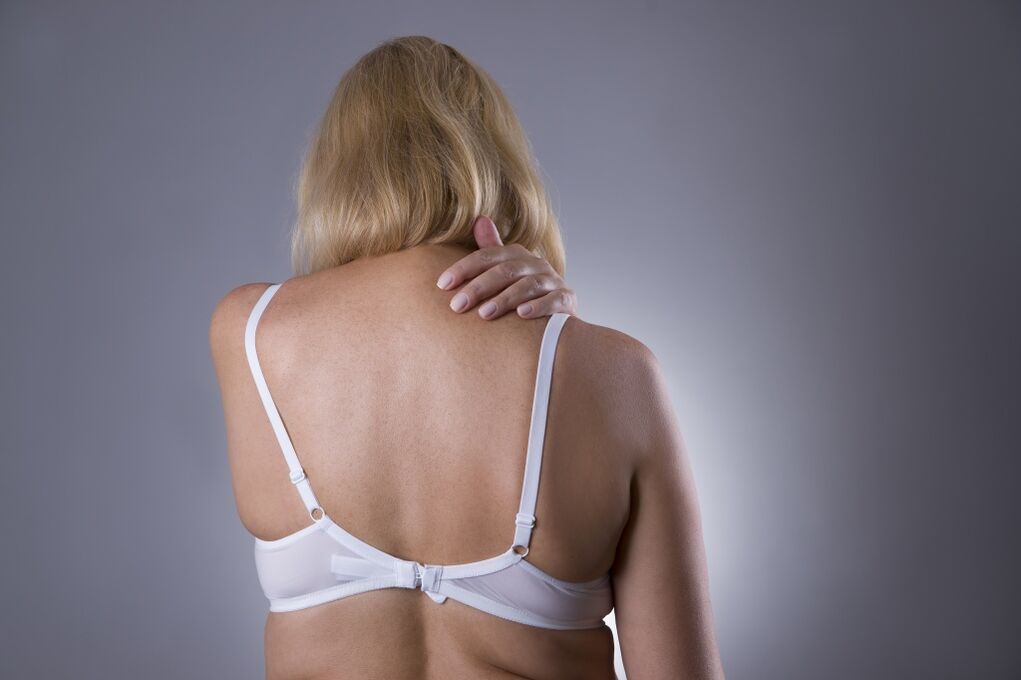
Considering and analyzing the elaboration of changes in the vertebrae, doctors distinguished several stages of osteochondrosis of the cervix region:
- Preclinic phase.Osteochondrosis of the cervical cervix is expressed by displacing the pulpa seed to the side and the beginning of destroying the fibrous ring.The pain is missing during this period, a little lordosis and the difficulty of turning or deciding the head.
- The osteocondrosis of the cervical region of degrees 2 is an increase in abnormal destruction, the instability of the entire segment with the subluxis, and the pain appears, sometimes in the shoulder strap or in the maintenance.The patient complains of warning, deterioration of memory and attention.
- Degree osteochondrosis is formed with complete interruption of the fibrous ring.Neurological symptoms occur, sensitivity disturbance.In the third stage, the pain becomes constant and greatly disturbs the patient.The mobility of the cervical segment deteriorates.
- Cervical osteochondrosis is 4 degrees.The final stage of the degenerative process.The intervertebral disk is completely replaced by connective tissue, all symptoms become more pronounced, the deterioration of the coordination of movements and the ataxia can be observed.
Depending on the localization of pain, the following type of disease can be distinguished: radiculoichemia, cervicobrachialgia, cervicocanalia and cervicalgia.
Of course, the method of the disease is common to divide the neck into acute intervertebral osteochondrosis, which first appears and chronic, for years with continuous remission and aggravations.
Which doctor treats the cervix osteochondrosis?
The diversity of symptoms that often hide under the mask of another disease causes a logical question in patients - which doctor should you contact?If any pain in the neck, shoulders and hands, or the occurrence of neurotic disorders, is urgent to turn to the neurologist or spinal cord.
And who has to contact if there is no such professional at the local clinic?In this case, the ticket must be postponed to the therapist.The doctor prescribes treatment or sends a narrow specialization to the doctor.
Symptoms depending on the injured vertebrae
Separately, radical syndromes can be distinguished, leading to one or the other to sensitive and motor disorders.Depending on what kind of vertebrae is pushed to the spine:
- C1: leads to numbness and impaired sensitivity in the back of the head;
- C2: pain in the parietal region and in the back of the head;
- C3: speech impairment, tongue sensitivity, decrease in pain and sensitivity on the side where the spine is damaged;
- C4: Heart pain, left hypochondrium, shoulder, shoulder blade, breathing disorders, decrease in cervical muscles;
- C5: pain on the shoulder in the outer area;
- C6: The pain from the forearm is the thumb of the hand and the cervical shovel;
- C7: Pain in the back of the shoulder, from the neck to the lase, in the forearm gives 2-4 fingers in the forearm;
- C8: Pain from the neck to the shoulder, from the forearm to the little finger.
Diagnosis of osteochondrosis
Instrumental test methods are used to produce diagnosis:
- X -a -spinal examination;
- myelography;
- Sensitivity, neurological survey of reflexes.
Further methods prescribed and clarified the diagnosis, the stage of pathology are as follows:
- Computer tomography of the spine (CT);
- nuclear magnetic resonance (JAMR);
- Magnetic resonance imaging (MRI).
During the examination of nervous system tests, the doctor assesses the degree of cervical mobility and pain and the bloodstream in the spine artery.
The cervix osteochondrosis requires not only the vertebrae but also the nearby tissues, blood vessels and nerves.Only then can we judge the full image of the disease due to the disease.
Diagnosis of cervical osteochondrosis begins with the patient's visual examination and assessment.The neuropathologist is interested in the patient's life and childbirth conditions, the presence of chronic diseases, nutrition and motor activity.
The preliminary diagnosis is confirmed by conducting instrumental research:
- X -gray in two forecasts;
- Mri;
- CT;
- UZD (duplex scanning).
Analysis of hormones needed for fairer sex is required.Without it, the treatment of osteochondrosis of the cervix in women does not begin.
Differential diagnosis is performed to exclude pathologies with such symptoms by appointing additional consultations with a surgeon, gynecologist, cardiologist, ophthalmologist and Lore.
Complications of osteochondrosis
The cervical spine osteochondrosis is dangerous with its complications.With the detriment of the disease, pressing the spinal artery by pressing the brain stroke, hearing and vision is a long -term deterioration.
Often a vertebral hernia, severe hypertension and numbness or cooling of the fingers connect to osteochondrosis.In women, neurological complications often develop - constant fatigue, lethargy, loss of performance, excessive resentment.
The prescribed treatment, the extension of the doctor and the lack of osteochondrosis therapy contribute to the progress of the disease and provokes the development of complications, pathologies and new diseases, for example:
- intervertebral disks are hernia (spine hernia);
- protrusion;
- kyphosis;
- radiculitis;
- Salt deposits in the intervertebral space;
- spinal cord -stroke;
- reduction of muscle mass of limbs, muscle atrophy due to damaged blood supply;
- Paralysis of the lower limbs.
Despite the fact that osteochondrosis can occur without prominent symptoms and pain, neglected osteochondrosis is the most dangerous to the development of serious complications and the patient's disability.
Medical physical education
LFK should be performed outside the cervical osteochondrosis of the cervix.The greatest efficiency of this technique during the recovery period.Do not cause discomfort and pain when performing the complex!
| Practice No. 1 | Lying on your stomach, relax your hands on the floor, lift your head and trunk, your back must be straight.Stay in this position for 1-2 minutes.Slowly sink to the floor.Repeat 2-3 times. |
| Practice No. 2 | Lying on your stomach, stretch your arm along the body, turn your head to the left, try touching the floor with your ear, then turn your head to the right.Repeat 6-7 times in both directions. |
| Practice No. 3 | In a sitting position, bend forward and try to touch your chest with your head, then exhale, leaned back and throw your head.Repeat 10-15 times. |
| Exercise 4 | When sitting, place your palms on your forehead, put pressure on your palm on your forehead, and your forehead is on your palm.Continue this exercise for 30 seconds.Repeat 2-3 times. |
| 5 Exercise | Slowly turn your head first in one direction and then in the other direction.10 rotations in both directions.Make sure there is no dizziness.When it appears, the workout stops. |
Risk factors
The chances of getting osteochondrosis if you have:
- disorders of spinal formation;
- overweight;
- long physical effort;
- bad habits (smoking);
- sedentary lifestyle;
- work that involves a regular effect of vibration on the spine (such as drivers);
- Long stress, excessive tension;
- Local hypothermia;
- Previous injuries of neck and chest injuries;
- Autoimmune pathologies are the degeneration of cartilage.
Psychosomatics
The development of cervical osteochondrosis indicates that they are unable to resist problems.Occasionally people will be so strong and confident in their abilities that their stability before the disadvantages will become stiff and elastic.In this case, attempts to turn their heads are accompanied by stiffness, cramps and other discomfort.
In addition, osteochondrosis can develop in people who are afraid of problems and do not know how to cope with them.In this case, the mammal's protective reflex triggered and the head is literally pulled into the shoulders.This provision is considered unnatural, so after a while, the muscles of the cervical region are damaged and deformed.
Treatment
Treatment of cervical osteochondrosis depends on the stage of the disease.If there is a sufficiently conservative, migrant treatment in the first stage, then in the second and third stages, the doctor is responsible for stopping the pain syndrome.Increased cases may require surgery for decompression and stabilization of the vertebrae.
Drugs
| Group | Description |
| NSAIDS (no -steroid anti -inflammatory drugs) | Help remove swelling and pain.The most commonly used drugs are based on acting components such as sodium dichlofenac. |
| Vasodilarative drugs | Contributes to the improvement of blood circulation. |
| Restricts, muscle relaxes | They are also prescribed to facilitate the patient's general condition and reduce NSAID doses.At the same time, relieve nervous surge and muscle cramps, help to achieve a better therapeutic effect. |
At the end of the therapy, the NSAID should be purchased for the first -year set at home, as cervical pain can return regularly (stress, overvoltage, weather change).Contact your doctor before taking any drug.
If a positive effect is not observed after conservative treatment of conservative treatment, your doctor may recommend the patient's spine.
This procedure allows immobilization of the affected spine segment.
The essence of this is to remove the intervertebral disk, the decompression of the nerve root, the installation of the implant, or to create the physiological height of the plate area.
The operation has many side effects and contraindications.So it can cause vertebrogen disability.This is the reason why surgery is performed in extreme cases.
Massage with osteochondrosis of the cervix allows you to achieve noticeable improvements.It is important that the procedure is performed by a specialist: Incorrect movements in the cervical spine can exacerbate the situation.The movements should influence the collar zone, the cervix region and the back.
Pay attention to the technique of treating the cervix osteochondrosamassage to treat osteochondrosis.
- Caressing.The masseur affects the surface layers of the skin, moving from the head to the upper third of the back.At the same time, the palm or finger tip work.
- Press.The deep layers of the skin in the upper third of the back are exposed.In this case, the hands and thumb of the hands are performed on the neck to get into the skin.The tissues adjacent to the vertebrae are not involved in this process.
- Trituration.It is used to heat the skin and increase blood flow in the collar.The procedure should be done extremely carefully.It is forbidden to influence the spinous processes of the vertebrae.Occasionally, rubbing is replaced with circular strokes or by sawing similar to sawing.
- Kneading.This affects deeply lying tissues and has a limited value.This can exacerbate the pathology.
During the massage, the patient should lie on the stomach and sit in extreme cases.
Prevention

It is recommended to prevent the disease:
- The health of the spine is to see which cushion sleeps on an orthopedic pillow and mattress;
- Take a hot shower daily for 10 minutes;
- Visit a bathroom or sauna (relieve cramps of cervical muscles);
- Avoid sharp inclinations and head turns;
- Walk more on foot, do yoga and swim;
- Take a five -minute break every hour with the "sitting" work (you have to walk during breaks, fall with body and put it in different directions);
- Avoid increased load on the spine: classes with weights, jumps, running;
- Choose chairs and chairs that support your spine;
- to leave addictions such as smoking, alcohol consumption;
- Drink at least one and a half liters of water daily.
The cervix with osteochondrosis is often (at least five times a day) and in small parts.Steamed or cooked vessels should be preferred.The salads should be seasoned with olive oil.

























